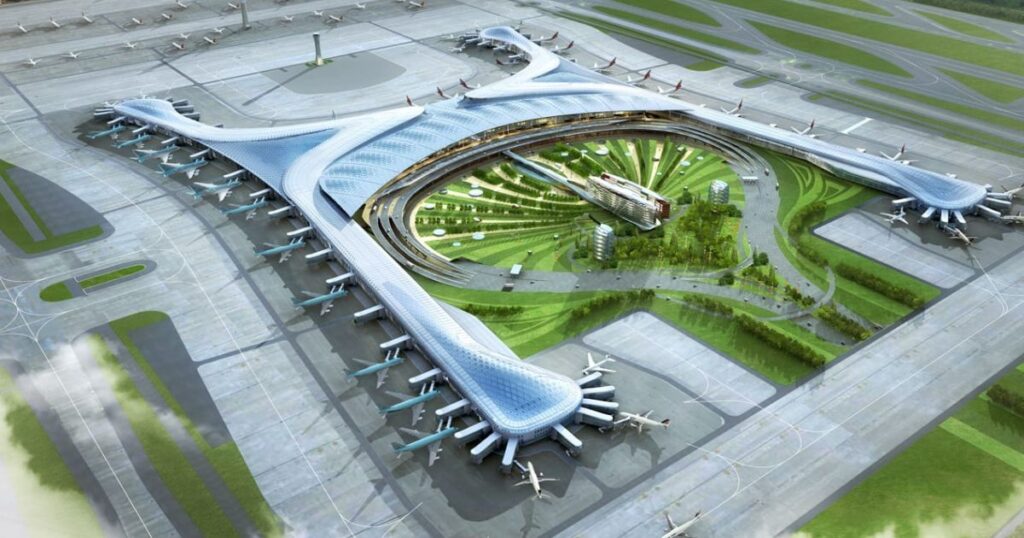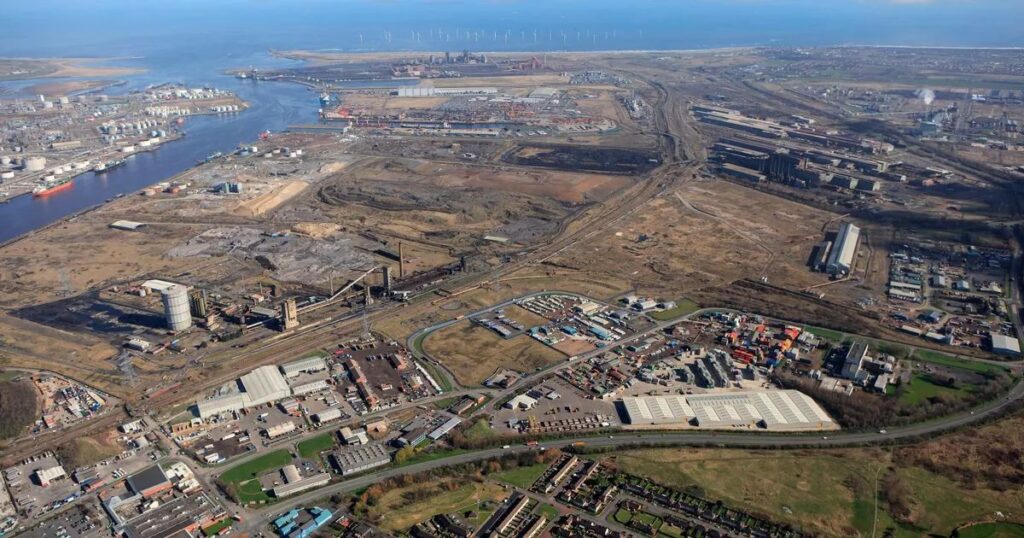Georgia, known for its rich history, diverse landscapes, and growing economy, stands at a crossroads in its aviation development.
As the state continues to expand its influence both nationally and internationally, the question of investing in different airport locations becomes increasingly pertinent.
This comprehensive analysis explores the multifaceted reasons why Georgia should consider diversifying its airport infrastructure, examining the potential benefits, challenges, and long-term implications of such investments.
The Current State Of Georgia’s Airports
Here are some short lines about the current state of Georgia’s airports:
- Hartsfield-Jackson Atlanta International remains the world’s busiest airport
- Smaller regional airports serve other parts of the state
- Savannah/Hilton Head International is growing in passenger traffic
- Some rural airports struggle with maintaining commercial service
- Upgrades and expansions are planned for several Georgia airports
- Air cargo operations are significant, especially in Atlanta
- General aviation is important for business and recreation statewide
Hartsfield-Jackson Atlanta International Airport
At the heart of Georgia’s aviation network lies Hartsfield-Jackson Atlanta International Airport, consistently ranked as one of the busiest airports in the world.
This hub has served as a cornerstone for the state’s economic growth and connectivity. However, relying heavily on a single major airport presents both advantages and limitations.
Regional Airports
Georgia is home to several regional airports, including those in Savannah, Augusta, and Columbus. While these facilities play crucial roles in their respective communities, there’s potential for expansion and development to better serve the state’s growing needs.
Reasons For Investing In Different Airport Locations

Here are some short lines about reasons for investing in different airport locations:
- Economic development and job creation in surrounding areas
- Improved regional connectivity and accessibility
- Reduced congestion at major hubs
- Serving underserved markets and communities
- Potential for cargo and logistics growth
- Tourism development in new destinations
- Strategic military or emergency response positioning
- Alleviating environmental pressures on existing airports
- Capitalizing on emerging travel trends or routes
- Potential for real estate development around new airports
Economic Growth And Development
Investing in multiple airport locations across Georgia can serve as a catalyst for economic growth in various regions. New and expanded airports can:
- Attract businesses and industries to previously underserved areas
- Create job opportunities both directly and indirectly
- Stimulate local economies through increased tourism and business travel
- Enhance property values in surrounding communities
- Provide improved infrastructure for existing businesses to expand
Improved Connectivity
Diversifying airport locations can significantly enhance Georgia’s overall connectivity:
- Reduced travel times for residents in different parts of the state
- Increased options for domestic and international travelers
- Better integration of rural and urban areas
- Enhanced emergency and medical transport capabilities
- Improved accessibility for cargo and freight services
Decentralization Of Air Traffic
Investing in multiple airports can help decentralize air traffic, which offers several benefits:
- Reduced congestion at Hartsfield-Jackson Atlanta International Airport
- Lower risk of system-wide disruptions due to weather or other issues
- More efficient air traffic management
- Potential for specialization among airports for example cargo, private aviation, international flights
Tourism Boost
Georgia’s diverse attractions, from coastal beaches to mountain retreats, can benefit from improved airport access:
- Easier access to various tourist destinations within the state
- Potential for developing new tourism markets
- Increased capacity to handle seasonal tourist influxes
- Opportunity to showcase different regions of Georgia to visitors
Technological Advancements
Investing in new airport locations provides an opportunity to incorporate cutting-edge technologies:
- Implementation of smart airport concepts
- Integration of sustainable and eco-friendly designs
- Adoption of advanced security measures
- Incorporation of passenger-friendly technologies for improved travel experience
Read This Blog: How To Set Up Automatic Investments On Vanguard?
Potential Locations For Airport Investment

Here are some short lines about potential locations for airport investment:
- Emerging economic centers with growing populations
- Tourist destinations with increasing visitor numbers
- Strategic points along major trade routes
- Underserved rural areas with limited air access
- Cities with outdated or overcrowded existing airports
- Regions with strong industrial or tech sectors
- Coastal areas for improved island connectivity
- Border regions to facilitate international travel
- Areas prone to natural disasters for emergency response
- Locations near major highway or rail intersections
Coastal Georgia
The coastal region of Georgia, with its growing population and tourism industry, could benefit from expanded airport facilities:
- Enhanced access to popular beach destinations
- Support for the growing port industry in Savannah
- Potential for attracting international flights from Europe and the Caribbean
North Georgia Mountains
Investing in airport infrastructure in the mountainous regions could:
- Boost tourism to the state’s natural attractions
- Provide better access for outdoor enthusiasts and adventure seekers
- Support the growing wine industry in the region
Central Georgia
Expanding airport facilities in central Georgia could:
- Serve as a backup to Atlanta’s airport
- Provide easier access to the state capital for government and business travelers
- Support the growth of educational institutions in the area
South Georgia
Investing in South Georgia’s airport infrastructure could:
- Enhance agricultural export capabilities
- Improve access to Florida markets
- Support the region’s growing manufacturing sector
Challenges And Considerations
Here are some short lines about challenges and considerations for airport investment:
- Environmental impact and noise pollution concerns
- High initial capital costs and long-term funding needs
- Complex regulatory and approval processes
- Land acquisition and zoning issues
- Competition from existing airports or alternative transport modes
- Changing travel patterns and technological disruptions
- Security and safety requirements
- Infrastructure development in surrounding areas
- Weather and geological factors affecting construction and operations
- Balancing commercial viability with public service obligations
Environmental Impact
Any airport expansion or new construction must carefully consider:
- Noise pollution and its effect on local communities
- Impact on local ecosystems and wildlife
- Carbon emissions and air quality concerns
- Land use and potential loss of green spaces
Funding and Resources
Significant investment will be required, necessitating careful financial planning:
- Allocation of state and federal funds
- Potential for public-private partnerships
- Long-term maintenance and operational costs
- Balancing investment across different regions of the state
Regulatory Hurdles
Expanding airport infrastructure involves navigating complex regulations:
- Federal Aviation Administration (FAA) approvals
- Environmental impact assessments
- Local zoning and land use regulations
- Coordination with existing air traffic control systems
Community Acceptance
Gaining support from local communities is crucial:
- Addressing concerns about noise and increased traffic
- Demonstrating clear economic benefits to the local area
- Ensuring fair compensation for any displaced residents or businesses
- Involving communities in the planning and decision-making processes
Case Studies: Successful Multi-Airport Systems

Here are some short lines about successful multi-airport systems as case studies:
- London: Heathrow, Gatwick, Stansted, Luton, and City airports
- New York: JFK, LaGuardia, and Newark
- Tokyo: Haneda and Narita
- Paris: Charles de Gaulle and Orly
- San Francisco Bay Area: SFO, Oakland, and San Jose
- Washington D.C.: Dulles, Reagan National, and BWI
- Milan: Malpensa and Linate
- Istanbul: New Istanbul Airport and Sabiha Gökçen
- Moscow: Sheremetyevo, Domodedovo, and Vnukovo
- Bangkok: Suvarnabhumi and Don Mueang
New York Metropolitan Area
New York’s system of multiple airports including JFK, LaGuardia, and Newark, demonstrates how a diverse airport network can serve a large metropolitan area effectively.
London, UK
London’s network of airports including Heathrow, Gatwick, Stansted, and others, shows how different airports can specialize and complement each other.
Tokyo, Japan
Tokyo’s dual-airport system of Haneda and Narita illustrates how domestic and international traffic can be efficiently managed across multiple locations.
Read This Blog: Which Investment Companies Own Condos In Washington DC?
The Role Of Technology In Modern Airports
Here are some short lines about the role of technology in modern airports:
- Biometric identification for faster, seamless check-ins
- AI-powered predictive maintenance for aircraft and facilities
- Smart baggage tracking systems
- Automated security screening processes
- Digital wayfinding and personalized passenger information
- IoT sensors for real-time operational data and efficiency
- Robotic assistants for customer service and cleaning
- Blockchain for secure data sharing and ticketing
- Autonomous vehicles for ground transportation
- Virtual and augmented reality for staff training
Artificial Intelligence And Machine Learning
- Predictive maintenance for airport facilities
- Enhanced security screening processes
- Personalized passenger experiences
Biometrics And Contactless Technology
- Streamlined check-in and boarding procedures
- Improved security measures
- Reduced physical contact points in the post-pandemic era
Sustainable Technologies
- Solar power integration
- Electric ground vehicles
- Water recycling systems
Economic Impact Analysis

Here are some short lines about economic impact analysis for airports:
- Direct job creation in airport operations and services
- Indirect employment in supporting industries and supply chains
- Increased business productivity through improved connectivity
- Attraction of foreign direct investment to the region
- Boost to tourism and hospitality sectors
- Catalytic effects on regional economic development
- Enhanced trade and export opportunities
- Property value changes in surrounding areas
- Tax revenue generation for local and state governments
- Multiplier effects on local spending and economic activity
Job Creation
- Direct employment in airport operations and management
- Indirect jobs in related industries hospitality, retail, transportation
- Induced employment from overall economic growth
Revenue Generation
- Increased tax revenue for local and state governments
- Boost to local businesses through increased visitor spending
- Potential for new business development around airport zones
Long-term Economic Benefits
- Enhanced competitiveness in attracting businesses and events
- Improved logistics for existing industries
- Potential for developing aerotropolis concepts around new airports
Frequently Asked Questions
What are the main benefits of investing in multiple airport locations in Georgia?
The main benefits include economic growth, improved connectivity, decentralized air traffic, tourism boost, and opportunities for technological advancements in aviation infrastructure.
How will new airport investments affect local communities?
New airport investments can bring job opportunities, increased property values, and improved access to transportation, but may also raise concerns about noise and environmental impact.
Can Georgia support multiple international airports?
With proper planning and market analysis, Georgia could potentially support multiple international airports, each serving different regions and market segments.
How long does it typically take to develop a new airport?
The development of a new airport can take anywhere from 5 to 15 years, depending on the scale of the project, regulatory approvals, and funding availability.
Will investing in new airports reduce the importance of Hartsfield-Jackson Atlanta International Airport?
While new investments may redistribute some traffic, Hartsfield-Jackson is likely to remain a crucial hub, with new airports complementing rather than replacing its role.
Conclusion
Investing in different airport locations across Georgia presents a compelling opportunity for the state to enhance its economic growth, improve connectivity, and position itself as a leader in modern aviation infrastructure.
Challenges exist, particularly in terms of funding, environmental considerations, and regulatory compliance, the potential benefits to communities, businesses, and the overall state economy are significant.
By carefully planning and executing a diversified airport strategy, Georgia can create a more resilient and efficient air transportation network. This approach not only addresses current needs but also prepares the state for future growth and technological advancements in the aviation industry.

Marcus Delgado is a certified financial planner with expertise in retirement strategies and tax optimization.
With a background in economics and a passion for helping individuals achieve financial freedom, Marcus provides practical advice on long-term wealth building and smart money management.












